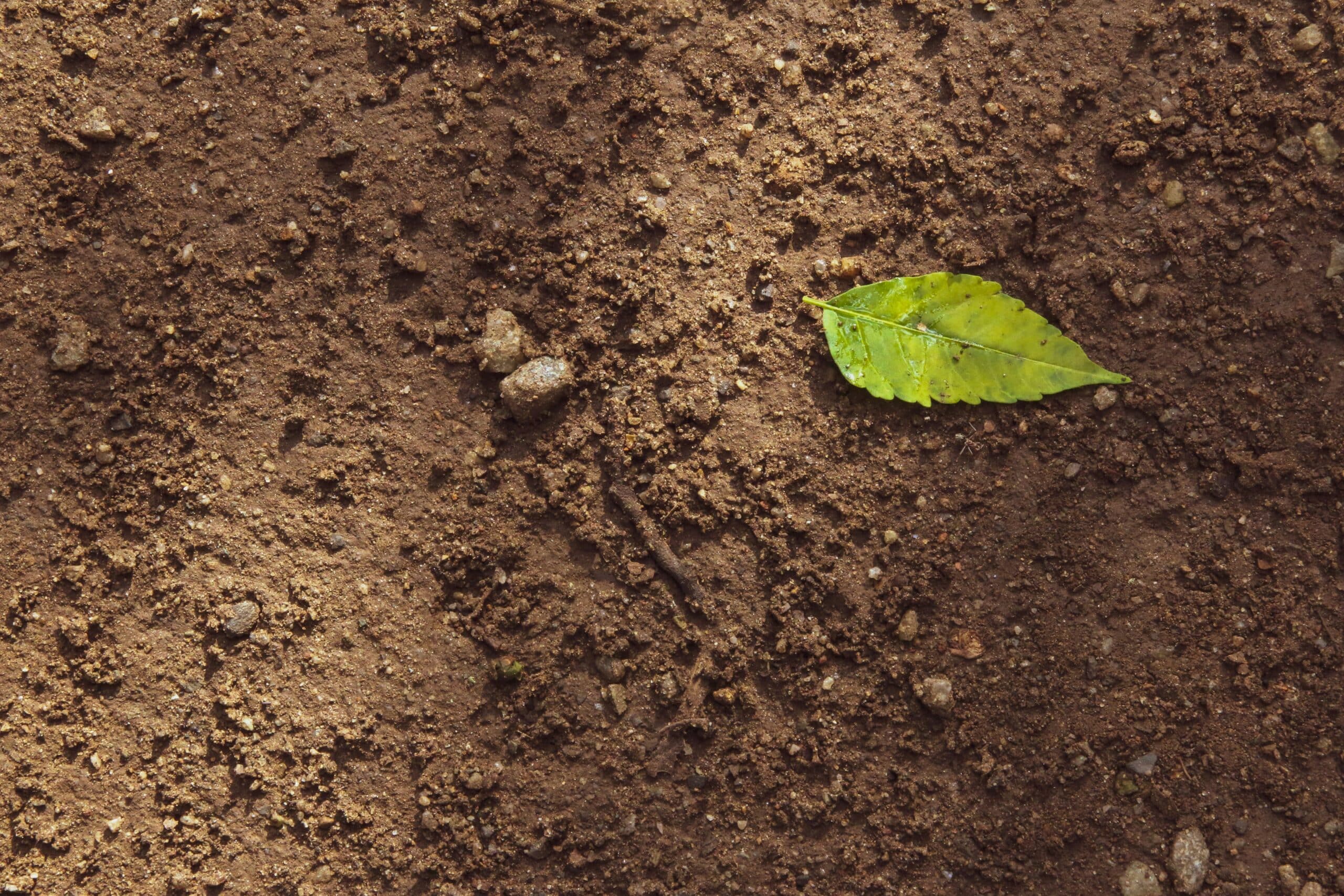
Date April 02, 2025
Imagine stepping into a landscape where every tree stands lush and vibrant, their branches sprawling with healthy leaves that dance gracefully in the breeze. This visual splendor isn’t just a matter of chance; it’s the result of meticulous tree nutrition. Proper nutrition is fundamental to the health and longevity of trees. It bolsters their defenses against pests, diseases, and environmental stresses, enabling them to flourish year after year. Moreover, the aesthetic benefits of well-nourished trees are undeniable. Vibrant foliage and robust growth not only enhance the beauty of a property but also significantly increase its overall value. Thus, understanding and implementing effective tree nutrition practices are essential for anyone looking to cultivate a thriving landscape.
Photo by Glen Carrie on Unsplash
Transitioning from the broader implications of tree health, it’s crucial to zoom in on the specifics—what exactly do trees need to thrive? At the heart of tree vitality are essential nutrients, categorized into macronutrients and micronutrients. Macronutrients, which include nitrogen, phosphorus, and potassium, are fundamental for functions such as growth, reproduction, and resilience to environmental stresses. Nitrogen, for example, is vital for leaf growth and chlorophyll production, while phosphorus supports the development of roots and flowers, and potassium plays a key role in water regulation and disease resistance. Equally important are micronutrients like iron, which aids in energy production, and magnesium, a critical component of chlorophyll.
The soil in which trees grow plays a foundational role in their nutrition. The availability of these essential nutrients is largely influenced by the soil’s composition, pH level, and organic matter content. For instance, a soil’s pH can affect the solubility of nutrients, thereby determining how easily a tree can absorb them.
Understanding and managing soil health transcends mere fertilizer application. It requires a holistic approach, ensuring that trees receive a balanced diet tailored to their specific environmental and biological needs. By fostering healthy soil, we lay the groundwork for sustaining robust and resilient trees, which are better equipped to contribute to our landscapes and ecosystems.
Essential Nutrients for Trees
Macronutrients
Nitrogen: Role in Leaf Growth and Photosynthesis
Nitrogen is fundamental to the health and functionality of trees, primarily influencing leaf growth and the photosynthesis process. As the major building block of chlorophyll—the molecule that gives plants their green color and plays a critical role in converting sunlight into energy—nitrogen is directly linked to a tree’s ability to create food for itself through photosynthesis. A sufficient nitrogen supply promotes lush, dense foliage, which not only enhances a tree’s aesthetic appeal but also its overall vigor and survival capabilities. However, it’s important to manage nitrogen levels carefully, as both deficiencies and excesses can lead to poor plant health. Deficiency typically manifests in yellowing leaves and stunted growth, while excess nitrogen might encourage rapid growth that can weaken the tree or make it more susceptible to pests and diseases.
Phosphorus: Importance for Energy Transfer and Root Development
Phosphorus plays a critical role in several key functions within a tree, including energy transfer, photosynthesis, and nutrient movement within the plant. It is a component of ATP, the energy currency of cells, which is crucial for energy transfer within the tree. This nutrient contributes significantly to root development, enhancing a tree’s ability to anchor itself firmly and absorb water and other nutrients from the soil. Healthy root systems are essential for stability and growth, making phosphorus a vital element in early tree development and ongoing health. Phosphorus deficiency can lead to diminished growth rates, weak root systems, and an overall decline in tree vitality.
Potassium: Functions in Water Regulation and Disease Resistance
Potassium is another key macronutrient that serves several vital functions in tree health, notably in water regulation and disease resistance. It helps regulate the opening and closing of stomata, which are small pores on the leaves through which water vapor and gases are exchanged. This regulation is crucial for maintaining the tree’s water balance, especially during periods of drought or extreme heat. Furthermore, potassium strengthens the tree’s overall physiology, enhancing its ability to ward off diseases and withstand environmental stresses. Trees lacking in potassium often exhibit symptoms such as scorched leaf edges, slower growth rates, and increased vulnerability to disease and insect attacks. Ensuring an adequate potassium level is thus essential for maintaining a tree’s health and resilience.
Micronutrients in Tree Maintenance
Iron: Essential for Chlorophyll Synthesis
Iron is crucial for the synthesis of chlorophyll, which is necessary for photosynthesis, the process through which trees convert light energy into chemical energy. Without sufficient iron, trees can suffer from chlorosis, a condition marked by yellowing leaves with very faint green veins. Chlorosis mainly affects new growth first, as iron is not a mobile nutrient within the tree. This can severely impair a tree’s ability to produce energy, stunting its growth and weakening its overall health. Iron deficiencies are often more pronounced in high pH soils, where iron becomes less available to trees. Correcting iron deficiency typically involves lowering the soil pH or applying iron directly to the soil or foliage.
Magnesium: Central Component of Chlorophyll
Magnesium is another vital micronutrient that acts as the central atom in the chlorophyll molecule. It plays a pivotal role in photosynthesis by facilitating the capture of sunlight energy. Magnesium deficiency is visible when leaves show interveinal chlorosis, where the areas between the veins turn yellow while the veins themselves remain green. This deficiency can eventually lead to leaf drop, reduced growth, and lower resilience to environmental stresses. Trees with insufficient magnesium might also exhibit premature fall coloration. To mitigate this, magnesium can be supplemented by applying magnesium sulfate (Epsom salts) around the base of the tree or through foliar sprays.
Zinc: Important for Growth Hormones and Enzyme Systems
Zinc is essential for the proper function of various growth hormones and enzyme systems within trees. It influences leaf size, stem elongation, and overall growth rates. Zinc deficiency commonly results in stunted growth, known as “little leaf,” where the leaves become unusually small and the internodes (spaces between leaves on a stem) shorten dramatically. Other symptoms include distorted leaf shapes and a reduction in the leaf’s ability to withstand low temperatures. Zinc deficiencies are often found in alkaline and heavily leached soils. Correcting a zinc deficiency requires the application of zinc, either as soil amendments or foliar sprays, to promote healthier growth and development.
Copper, Manganese, and Boron: Additional Critical Micronutrients
Other essential micronutrients include copper, manganese, and boron, each playing unique roles in tree health. Copper is vital for lignin production, which helps strengthen cell walls and supports overall structural integrity. Manganese aids in the metabolism of nitrogen and the synthesis of chlorophyll, while boron is crucial for the growth of new tissue and fruit development. Deficiencies in these nutrients can lead to various physiological disorders, weakening trees and making them more susceptible to disease and environmental stress.
Managing Micronutrient Levels
Maintaining adequate levels of these micronutrients is crucial for the health and maintenance of trees. It involves regular soil testing to detect deficiencies, appropriate fertilization strategies to address specific nutrient gaps, and ongoing soil management to adjust pH and improve nutrient availability. By ensuring that trees receive a balanced spectrum of essential micronutrients, homeowners and tree care professionals can promote robust tree growth, enhance aesthetic appeal, and extend the lifespan of these vital landscape elements.
Comprehensive Impact of Essential Nutrients on Tree Health and Growth
The health and growth of trees are profoundly influenced by a suite of macro and micronutrients, each playing a crucial role in various physiological processes. Macronutrients like nitrogen, phosphorus, and potassium are fundamental for growth, energy transfer, and environmental resilience. Nitrogen is vital for leaf growth and photosynthesis, ensuring trees can produce enough energy through sunlight. Phosphorus supports robust root development and aids in energy transfer, crucial for sustaining health and vigor. Potassium enhances water regulation and disease resistance, protecting trees from environmental stress and diseases. Micronutrients, including iron, magnesium, zinc, copper, manganese, and boron, though required in smaller amounts, are equally critical. Iron and magnesium are central to the production of chlorophyll and thus photosynthesis, directly influencing energy production and plant coloration. Zinc affects growth hormone activity and enzyme systems, impacting leaf size and tree robustness. Copper, manganese, and boron contribute to structural integrity, nitrogen metabolism, and reproductive growth, respectively. Together, these nutrients ensure that trees not only survive but thrive, contributing to their structural stability, aesthetic appeal, and longevity. Adequate and balanced nutrition allows trees to better withstand pests, diseases, and climatic challenges, making nutrient management a cornerstone of effective tree care and maintenance.
Understanding Soil Health and Nutrient Availability
Soil composition plays a pivotal role in the overall health and growth of trees by directly affecting the availability of essential nutrients. Composed of minerals, organic matter, water, and air, soil provides the primary medium in which trees anchor and from which they absorb water and nutrients. The physical structure of soil, including its texture and porosity, influences water retention and aeration, factors crucial for root health and nutrient uptake. Additionally, the organic content of soil enhances its fertility by providing nutrients as it decomposes and improves soil structure, which encourages root proliferation. Soil pH is another critical component, as it affects the chemical form of nutrients and dictates their availability to tree roots. For instance, in highly alkaline or acidic soils, essential nutrients like iron and phosphorus may become locked up and unavailable to the tree. Understanding and managing soil composition through regular testing and amendments is essential for maintaining nutrient-rich, healthy soil that supports robust tree growth and development.
The Role of pH Levels in Nutrient Solubility and Tree Absorption
Soil pH, a measure of the acidity or alkalinity of soil, profoundly influences nutrient solubility and the ability of trees to absorb essential nutrients. Most nutrients are readily available to trees in soils with a pH ranging from slightly acidic to neutral (approximately 6.0 to 7.0). If the pH strays too far from this range, certain nutrients can become less soluble, and therefore less available to the tree. For instance, in highly acidic soils, micronutrients like iron and manganese may become overly soluble, potentially leading to toxicity, whereas macronutrients such as phosphorus may precipitate and become unavailable. Conversely, in alkaline soils, essential micronutrients like iron, manganese, and zinc tend to bind to other minerals, rendering them insoluble and inaccessible, which can lead to deficiencies manifesting in the tree’s health and growth. Managing soil pH through the use of amendments such as lime (to raise pH) or sulfur (to lower pH) is crucial for maintaining optimal nutrient availability and ensuring that trees can effectively uptake the nutrients they need for healthy development.
The Role of Organic Matter in Enhancing Soil Structure and Nutrient Content
Organic matter is a key component in soil that significantly enhances its structure and nutrient content, playing a crucial role in tree health and growth. Comprising decomposed plant and animal residues, organic matter improves soil structure by increasing its porosity and aeration. This enhancement allows for better water retention and drainage, creating an ideal environment for root growth and function. Moreover, as organic matter decomposes, it releases a range of essential nutrients, such as nitrogen, phosphorus, and potassium, gradually enriching the soil. This slow release is beneficial for trees, providing a steady, natural source of nutrients over time. Organic matter also acts as a buffer, modifying soil pH and making nutrients more available to tree roots. Additionally, the presence of organic matter fosters beneficial microbial activity in the soil, which aids in nutrient breakdown and improves soil fertility. Regularly adding organic materials like compost or mulch can therefore substantially boost soil quality, supporting robust tree growth and overall landscape health.
How to Test Soil for Nutrient Deficiencies
Choosing the Right Soil Test
When assessing the health of soil for tree maintenance, understanding the different types of soil tests available is essential. Homeowners and tree care professionals can choose between DIY soil test kits and professional testing services, each offering distinct advantages depending on the precision required and the specific soil health issues being addressed.
DIY Soil Test Kits are a quick and cost-effective way for homeowners to get a basic understanding of their soil’s pH level and nutrient content, including key nutrients like nitrogen, phosphorus, and potassium. These kits typically involve collecting a soil sample and using provided chemicals and color charts to determine nutrient levels. While DIY kits can give a general indication of soil health and are useful for routine monitoring, they may not provide the accuracy or detail needed for more complex nutrient deficiencies or to diagnose specific problems.
Professional Soil Testing, conducted by certified labs, offers a more comprehensive analysis. These tests can provide detailed reports on a wide range of nutrients, soil pH, organic matter content, and even recommendations for specific types of fertilizers or soil amendments. Professional testing is especially beneficial for diagnosing serious or persistent issues, as these tests are more precise and can detect micronutrient levels that DIY kits cannot. Furthermore, professional labs can offer tailored advice based on the specific needs of the tree species present, taking into account local soil conditions and environmental factors.
Choosing between these testing options often depends on the level of detail required and the specific tree maintenance goals. For general upkeep and minor adjustments, a DIY kit may suffice. However, for more comprehensive soil management and to address specific health issues in trees, professional testing is recommended to ensure accurate diagnosis and effective treatment.
Collecting a soil sample for analysis is a critical step in assessing the health of your soil, and doing it correctly is essential for obtaining accurate and useful results. Here’s a detailed guide on how to properly collect a soil sample:
- Choose the Right Tools: Begin with clean tools to avoid contamination of the soil sample. A stainless steel spade or a soil probe is ideal. Using rusty or dirty tools can introduce metals or other residues that might skew the results.
- Select Appropriate Sampling Areas: Avoid areas that are not representative of the entire yard, such as those near roads, foundations, or unusual patches of growth or dieback. Instead, focus on areas that represent the general health and condition of the landscape where the majority of trees are growing.
- Sampling Depth: The depth of the sample should be consistent and appropriate for the types of trees you are assessing. For trees, a depth of 6 to 12 inches is typical, as this captures the root-active zone where most nutrient uptake occurs.
- Collect Multiple Samples: To get a comprehensive overview of your soil, collect multiple samples from various locations around your yard. Each sample should be taken from the same depth and in a similar manner. This approach accounts for variability in soil composition across different areas.
- Mix the Soil Samples: Once all samples are collected, mix them in a clean plastic bucket. This composite sample reduces the variability and provides a more accurate representation of the overall soil conditions affecting your trees.
- Prepare the Sample for Testing: After thoroughly mixing, take about a cup of the soil from the composite and place it into a clean, dry container. If the soil is wet, spread it out on a clean surface to air dry at room temperature; avoid heating or sun-drying, as this can alter the chemical composition of the soil.
- Label and Send for Analysis: Clearly label the container with your name, date, and any other relevant information required by the testing lab. Pack the soil sample securely and send it to the lab as soon as possible to prevent any changes in soil chemistry that might occur over time.
By following these steps, you ensure that the soil sample reflects the true soil conditions, providing you with reliable data to base your tree care and maintenance decisions.
Interpreting Soil Test Results
Understanding the Nutrient Levels and What They Mean for Your Trees
Interpreting the nutrient levels from a soil test provides crucial insights into the health of your soil and, consequently, the health of your trees. Each nutrient has a specific role that affects various aspects of a tree’s growth and function. For example, nitrogen is vital for leaf development and overall growth, phosphorus supports root growth and flower production, and potassium aids in water regulation and disease resistance. Micronutrients, though required in smaller amounts, are equally critical. For instance, iron is necessary for chlorophyll synthesis, which is essential for photosynthesis. Understanding these levels helps in diagnosing potential issues such as nutrient deficiencies or excesses, which can manifest as discoloration of leaves, stunted growth, or poor overall health. By analyzing these results, you can tailor your fertilization and treatment plans to address specific deficiencies or toxicities, ensuring that your trees receive the optimal balance of nutrients needed for healthy growth and development.
Adjustments for pH Imbalances and Other Issues Found During Testing
Soil pH can significantly influence nutrient availability and tree health. If soil testing reveals pH imbalances, it’s important to make adjustments to bring the pH to a level that maximizes nutrient availability. For soils that are too acidic (low pH), applying lime can help raise the pH, making it easier for trees to access phosphorus, potassium, and other nutrients that become limited in acidic conditions. Conversely, if the soil is too alkaline (high pH), adding sulfur can lower the pH to a more desirable level, which helps in making iron, manganese, and other micronutrients more available to the trees. Additionally, if testing indicates high levels of salts or other contaminants, amendments like gypsum may be recommended to improve soil structure and leach out excess salts. Implementing these adjustments based on testing results helps in correcting the underlying soil issues, thereby creating a healthier environment for tree growth and vitality.
In conclusion, the health and vitality of trees are critically dependent on the right balance of essential nutrients and proper soil health management. This essay has explored the fundamental roles of macronutrients such as nitrogen, phosphorus, and potassium, as well as crucial micronutrients including iron, magnesium, and zinc, which are indispensable for robust tree growth and development. Moreover, the essay emphasized the importance of soil as the foundation of good tree nutrition, highlighting how soil composition, pH levels, and organic matter content significantly influence the availability of nutrients.
Proper understanding and management of these elements ensure that trees not only survive but thrive, enhancing their aesthetic value and structural integrity while contributing positively to the environment. For anyone looking to maintain or improve the health of their landscape, embracing these nutritional practices is not just beneficial; it’s essential.
If you’re seeking expert guidance on optimal tree nutrition and soil health practices, TreeNewal is here to help. Our team of certified arborists has the knowledge and experience to tailor a care regimen that meets the unique needs of your trees and landscape. Contact TreeNewal today to schedule a consultation or a professional soil test, and ensure your trees receive the best possible care for lasting health and beauty.








